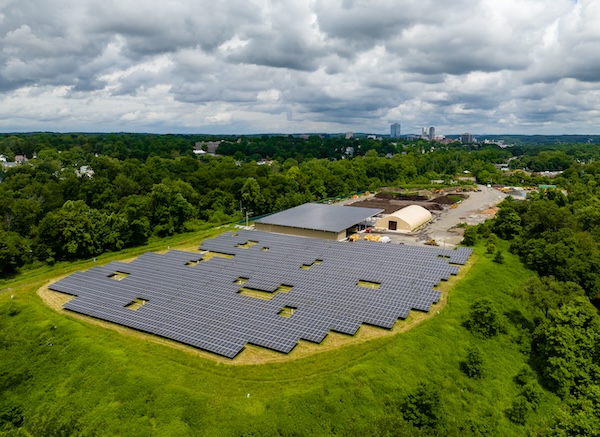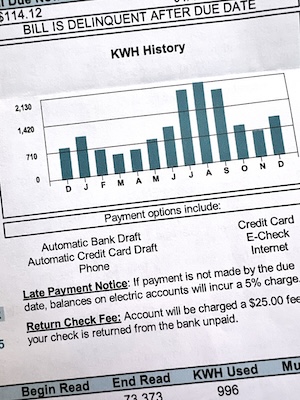How Utility-Consolidated Billing Can Improve Community Solar
Community solar brings clean energy to all people. It enables anyone to support and benefit from solar, even if they can’t or don’t want to install rooftop panels. The democratizing potential of community solar uniquely enables energy equity in, while also driving towards, a renewable energy future.
But in many states, the community solar customer experience includes unnecessary complications. These pitfalls hinder access for the low- and moderate-income (LMI) households who would benefit most from electricity discounts. Particularly clunky is the traditional dual-bill payment system, where households and businesses pay for their reduced electricity bills and their community solar credits separately — a disjuncture that can delay savings for months.
To address this problem, the foremost thing regulatory bodies can do is to implement utility-consolidated billing (UCB) using the net crediting methodology.[1] Under this UCB construct, community solar customers see their community solar discounts reflected directly on their regular electricity bill, much like utility assistance for LMI households or any other discount. It’s worth underscoring the good this policy offers: The customer relationship with their utility remains unchanged beyond the lower payment amounts due by customers and reduced collections for the utility. By making community solar more accessible, it becomes more equitable and makes the customer experience easier.

UCB alone may not address all community solar growing pains, such as project launch delays. But it improves the community solar product by streamlining the subscription process, and simplifies the delivery of savings. Rather than re-educating customers around a confusing model, it aligns the billing process with consumer expectations. Such alignment is good for the industry, and especially good for the disadvantaged communities that community solar is trying to help.
Improving the customer experience and removing delays
Most consumer products provide instant gratification. Someone purchases the item and it arrives at their door. So “instant” has this urge for commercial gratification become, that anything taking longer than two days to arrive seems sluggish. And when it comes to less tangible goods like streaming services, people expect instant access.
Our objective in all of this is to work with legislators, regulators, utilities, and community solar advocates to develop rules to enhance the customer experience and deliver on these expectations. But as it stands, customers must wait months between registration for and delivery of electricity discounts.
While this patience is currently an inherent part of expanding renewable generation, we see transitioning from the clunky dual billing to UCB as a meaningful way to reduce the wait between credit purchases and actualized savings.
State-by-state community solar programs must standardize around simplified billing
As community solar matures, the time is perfect for programs to evolve and address customer experience shortfalls.
Developers cannot amend the customer experience alone. Focused on getting projects up and running, they have little control over interconnection delays. Meanwhile, subscription servicers have clear incentives to improve the customer experience, but need program rule adjustments to deliver speed and ease of access for customers. By standardizing programs around UCB, state governments can enable community solar customers to see their community solar credits directly on their regular electricity bill.
This shift aligns the subscription experience with customer expectations. By consolidating a subscriber’s community solar credits onto their normal electricity bill, UCB boosts community solar accessibility, standardization, and equity. In sum, it makes community solar a vastly better consumer product.
Accessibility
UCB makes it easier for community solar service providers to educate potential subscribers about how credits and savings work. It also removes the hurdle of explaining a delayed dual bill system. When savings appear directly on the subscriber’s bill, subscription managers can spend less time convincing customers that community solar pencils financially, and more time serving said customers’ needs. That shift simplifies solar billing. By enhancing speed and ease of transaction, it also aligns the subscription experience with customer expectations.
Standardization
Implementing UCB is a necessary industry standard. Our community solar policy “laboratories,” where each state designs its own program, have proved an excellent forum for innovation. But when one state’s experiment wildly succeeds, other states should standardize the practice.
New York has demonstrated that UCB is one of those success stories that we must standardize for the industry to serve all customer types properly. It leads the nation in both community solar installations and overall customers. Last year, it passed 2 GW of installed community solar capacity — over 30 percent of the U.S. total. Thankfully, states are following New York’s lead, including Minnesota, New Jersey, Maryland, Illinois, and possibly California.
Of course, UCB supplements New York’s overall strong program to produce these results. But it’s safe to posit that UCB is one of the program’s most influential pillars. UCB made community solar easy for New Yorkers by vastly improving the customer experience. Now, New York is the highest-performing state by a longshot.
Equity
State governments have started getting serious about LMI community solar access. If they really want it to work, they must implement UCB. Otherwise, too many LMI households — the explicitly intended beneficiaries of community solar programs — may forgo participation entirely. Community solar programs with mandatory and voluntary LMI participation alike have struggled to engage customers. The last thing disadvantaged households need is another bill on their mind. We have engaged with thousands of LMI customers and know this to be the case. They may decide the monthly savings aren’t worth the hassle of a separate payment when doing nothing is the simplest approach.
 Why? Today’s dual billing is byzantine. First, people must invest enough time upfront to understand community solar. Those who do subscribe receive a reduced electricity bill from their utility – followed, sometimes over a month later, by a second bill from their community solar services provider. Consequently, larger commercial customers have dominated community solar. Whether an anchor customer or a small business, they virtually always consume more electricity than household subscribers. Higher energy usage makes the 5-20 percent community solar discount provide enough electricity savings to justify the annoyance of a separate bill. People watching their expenses closely may not see the appeal.
Why? Today’s dual billing is byzantine. First, people must invest enough time upfront to understand community solar. Those who do subscribe receive a reduced electricity bill from their utility – followed, sometimes over a month later, by a second bill from their community solar services provider. Consequently, larger commercial customers have dominated community solar. Whether an anchor customer or a small business, they virtually always consume more electricity than household subscribers. Higher energy usage makes the 5-20 percent community solar discount provide enough electricity savings to justify the annoyance of a separate bill. People watching their expenses closely may not see the appeal.
It’s clear: UCB is an equity policy, not just a billing one.
Subscriptions, delivered
As community solar programs launch or expand around the country, policymakers face a choice. They can continue to expect community solar service providers to convince people accustomed to the ease and speed of same-day delivery that they should happily wait months for subscription fulfillment. Or they can connect energy-burdened customers with millions of dollars in electricity discounts – with greater speed, easier comprehension, and significantly less friction. The difference lies with UCB.
For community solar to reach its energy transition potential, we need programs that clearly benefit the disadvantaged populations they are designed to help, and we must align with existing customer expectations of a subscription experience. UCB achieves both those aims. As the industry considers standardization, it should top every state’s community solar list.
Bruce Stewart is President & CEO, and Georgina Arreola is VP of Policy at the community solar services provider Perch Energy.
Perch Energy | www.perchenergy.com
[1] Net crediting: The total value of bill credits generated by a customer’s subscription are parsed into 3 pieces. First, there’s the subscription fee, equal to the total value of the bill credits generated by the customer’s subscription minus the discount on the bill credits. (This is what the customer would have been billed for separately under the dual bill structure.) Then, there’s the net credit (i.e. customer savings) - the net difference between the full value of credits less the subscription fee or the savings that is applied against a customer’s utility bill charges to reduce their energy costs. Third, there’s a utility administrative fee – typically calculated as a percentage of the value of the total credits generated by a customer’s subscription share. The remittance of the subscription fee, less any admin fee, is not dependent on customer collections since this is covered by the bill credit value.
Author: Bruce Stewart and Georgina Arreola
Volume: 2024 July/August












